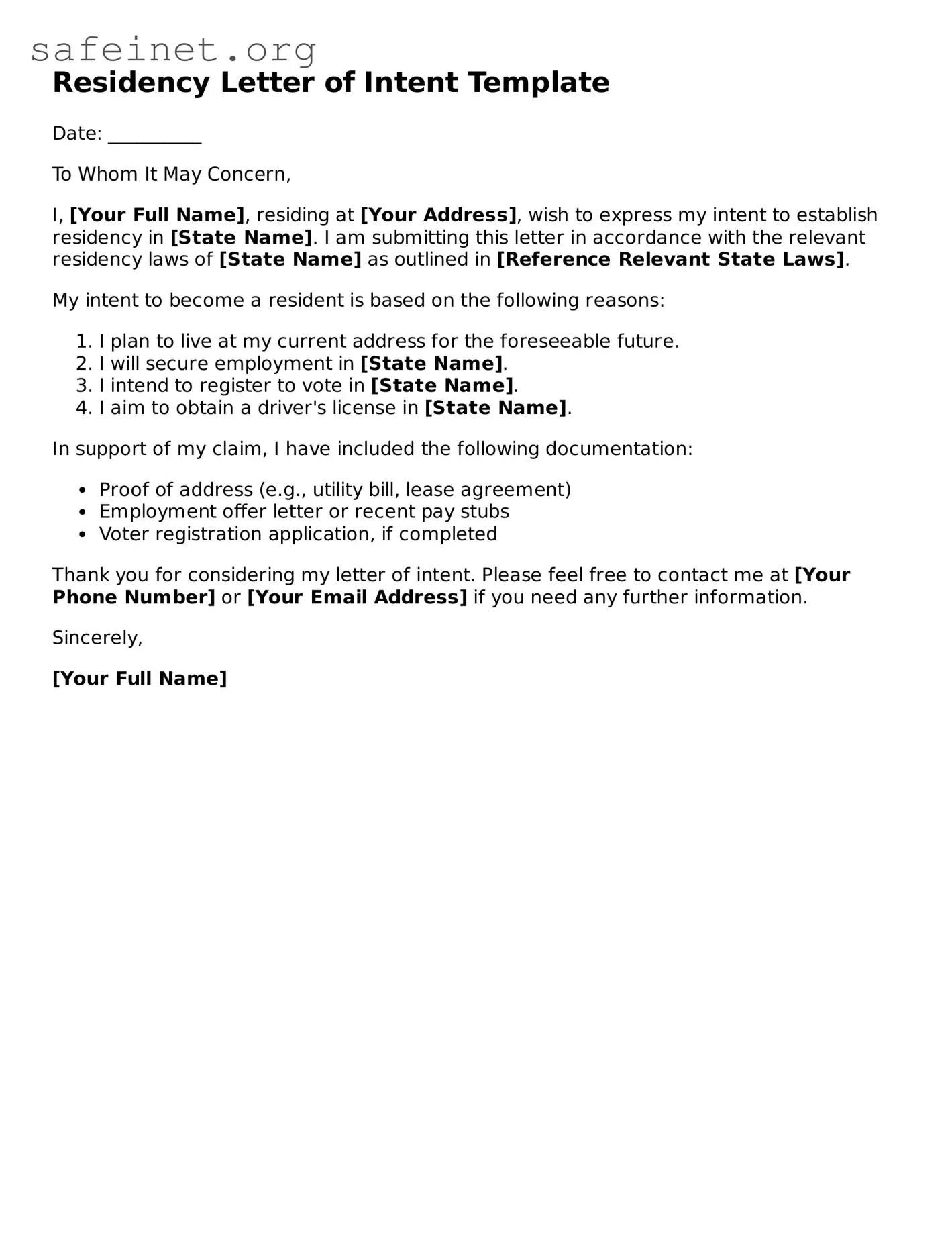What is a Residency Letter of Intent?
A Residency Letter of Intent is a formal document in which a medical residency applicant expresses their interest in a specific residency program. It outlines the candidate's motivations, qualifications, and goals related to the residency opportunity. This letter is often an essential component of the application process, allowing candidates to convey their enthusiasm and fit for the program.
When should I submit my Residency Letter of Intent?
Timely submission is crucial. Ideally, the Residency Letter of Intent should be sent soon after the interview or at least by the program's specified deadlines. Refer to the program's guidelines for exact timings. Submitting your letter promptly demonstrates your eagerness and commitment to the program.
What should I include in my Residency Letter of Intent?
Your letter should contain the following key elements: an introduction expressing your interest in the program, a summary of your qualifications, specific experiences that have prepared you for the residency, and a concise conclusion reaffirming your enthusiasm. Tailoring the content to reflect your alignment with the program's values is essential.
How long should the Residency Letter of Intent be?
The letter should be concise yet comprehensive. Aim for one page, typically 400 to 600 words. Keeping your letter succinct allows the reader to engage with your message effectively without losing interest. Focus on clarity and relevance throughout the document.
Is it necessary to mail a hard copy of the letter?
While some programs may accept electronic submissions, others might prefer or require a hard copy. Check the specific program's instructions regarding submission methods. If mailing a hard copy, ensure it's professionally formatted and sent with adequate time for delivery.
Can I use a Residency Letter of Intent for multiple programs?
While you can use a similar structure for different programs, it's advisable to customize each letter. Tailor the content to reflect specific aspects of each residency program that attract you. This personalization shows genuine interest and can distinguish your application from others.
Should I follow up with the program after submitting my letter?
A brief follow-up can be beneficial. Consider sending an email or making a phone call a few weeks after submitting your letter. Expressing your continued interest reaffirms your commitment and allows you to stay on their radar. However, avoid excessive follow-ups, as they may come across as unprofessional.
What are the common mistakes to avoid when writing a Residency Letter of Intent?
Common mistakes include being overly verbose, failing to tailor the letter to the program, or neglecting to proofread for errors. Avoid general statements that lack depth or specific examples. Taking the time to revise and refine your letter will strengthen your overall application.
How can I ensure my letter stands out?
To make your letter memorable, share unique personal anecdotes and highlight distinct qualities that set you apart from other candidates. Incorporate specific details about the program that resonate with you. A compelling narrative can effectively capture the reader's attention and serve as a powerful complement to your application.
